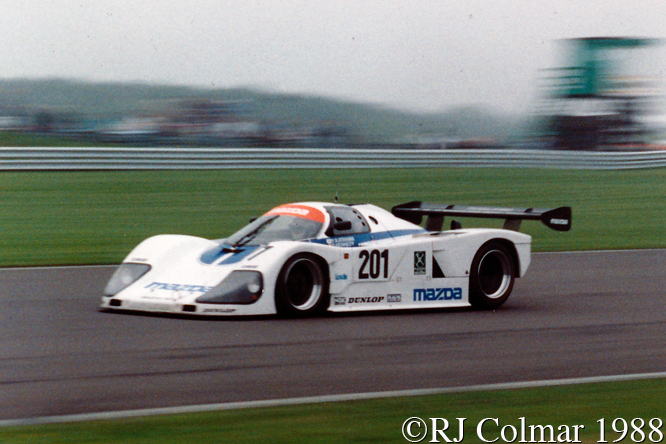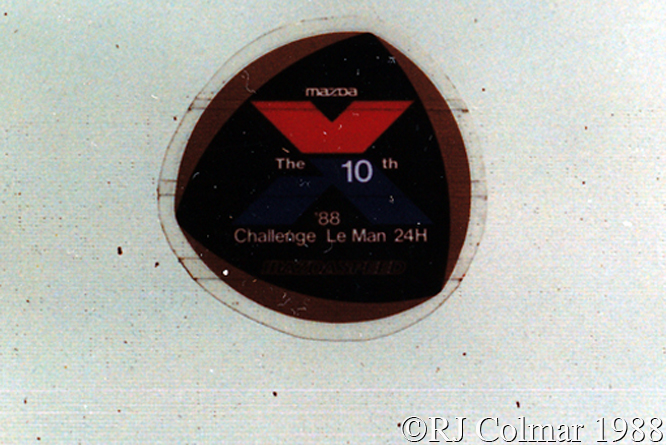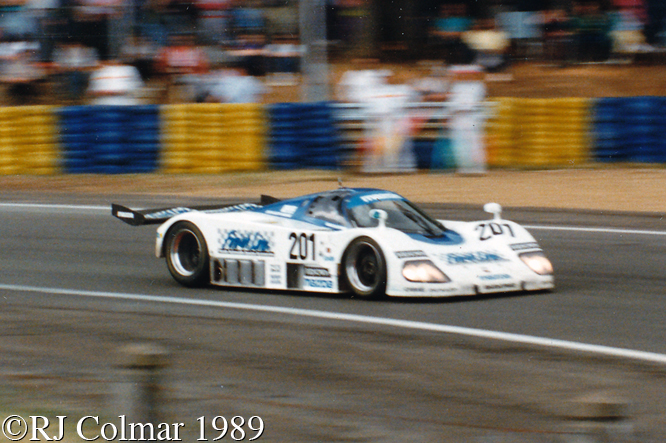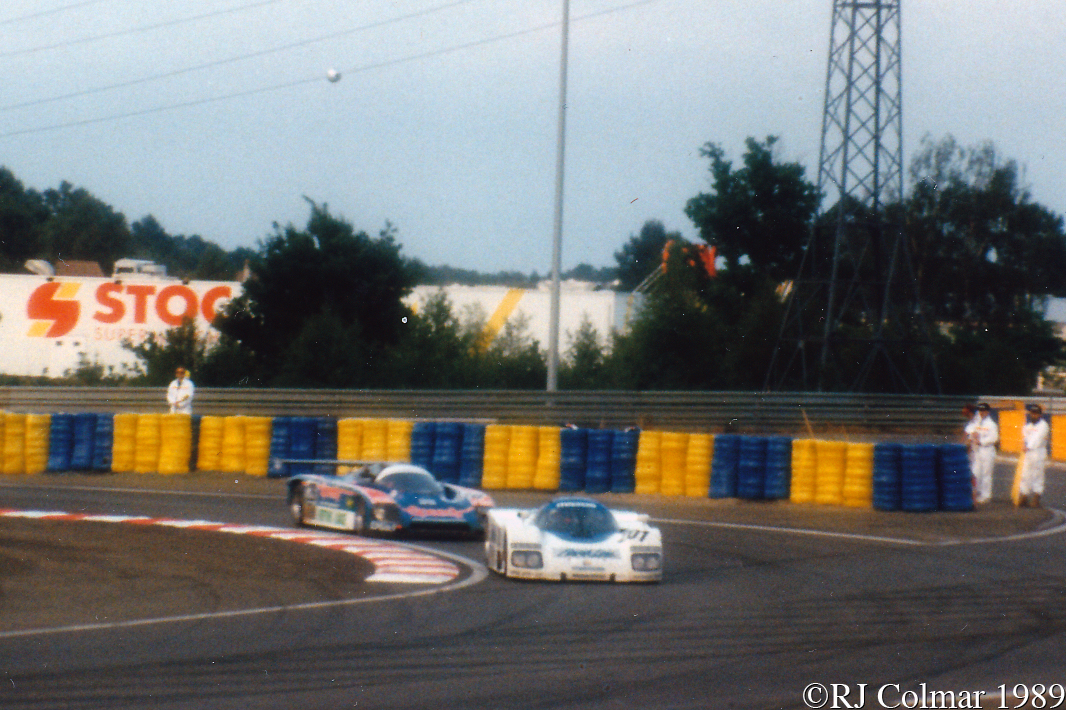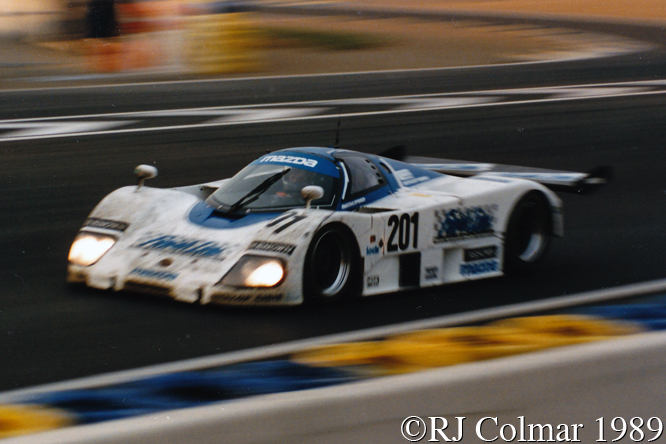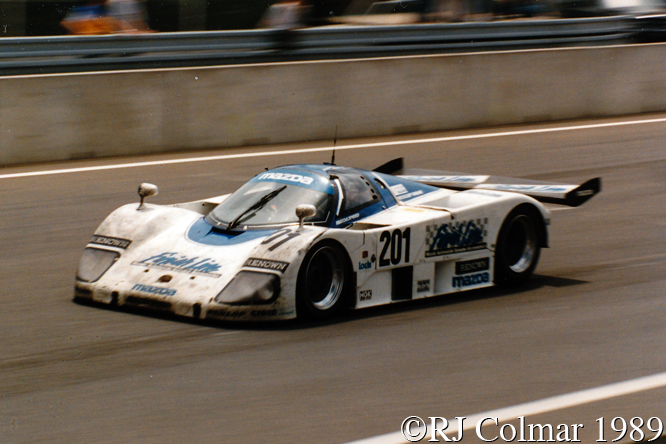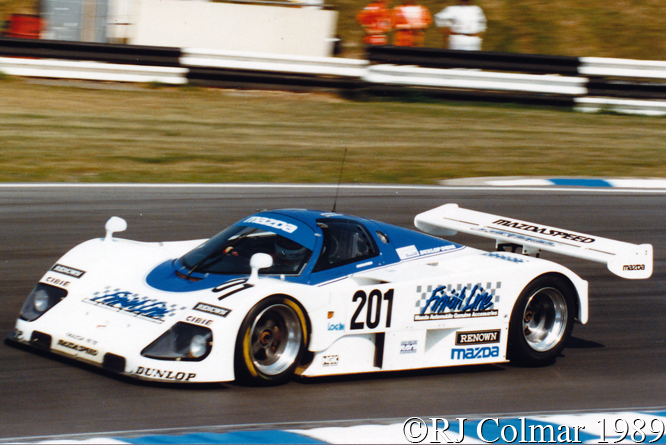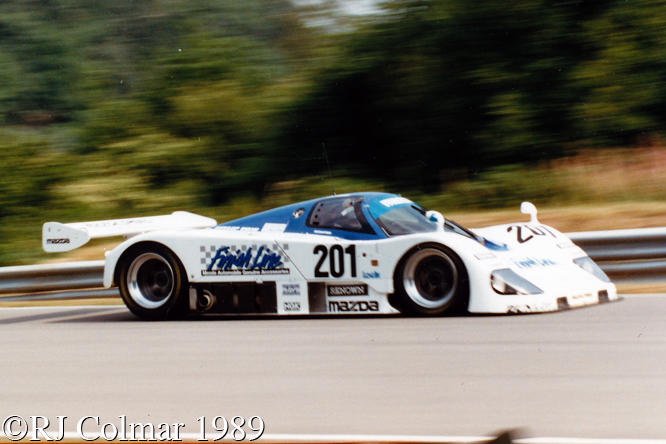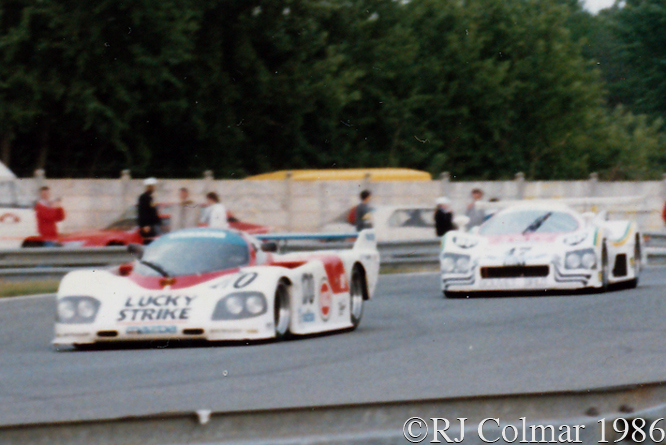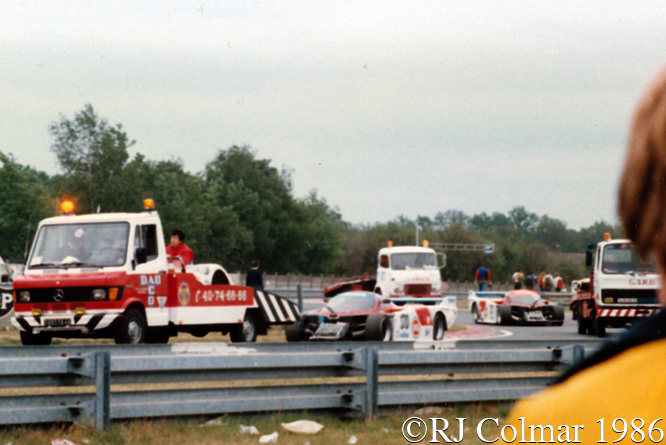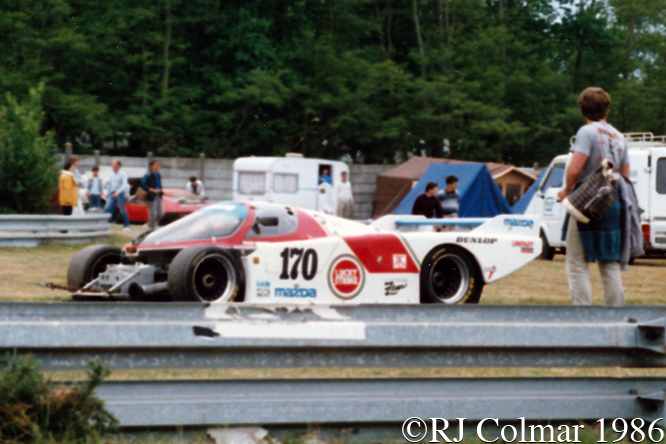The news from Mazdaspeed in 1990 was that they had further developed their 4 rotor wankel to include stepped variable telescopic intake runners and three spark plugs per rotor so that their motors could produce a peak 900 hp or 700hp in race configuration.
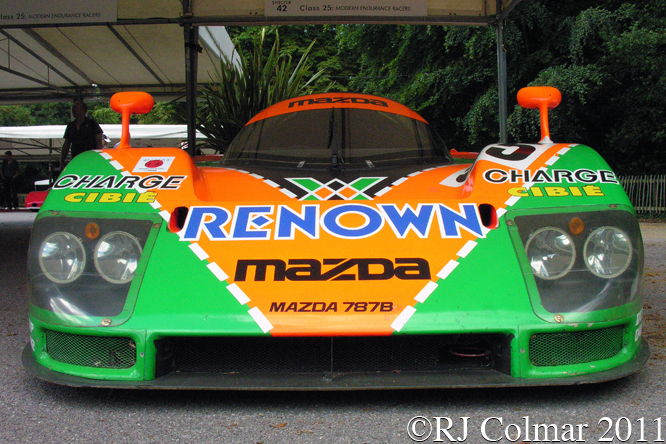
To cope with the new demands of the more powerful motor Nigel Stroud designed the 787 chassis which most obviously differed from it’s 757 and 767 predecessors by having more forward weight distribution with front mounted radiator with vents in front of the windscreen replacing the previous side mounted radiators.
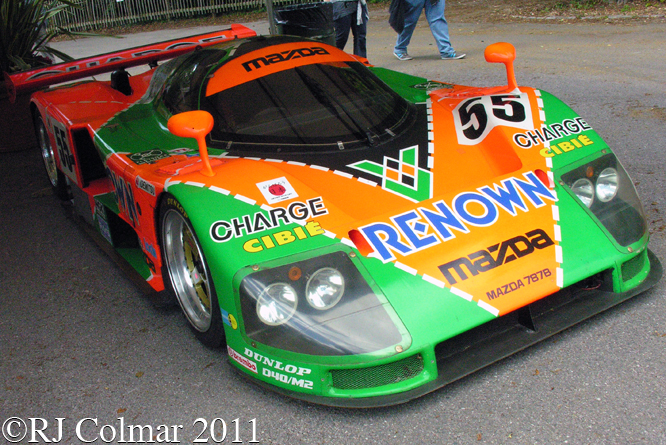
Two 787’s were built for the 1990 season, both cars retired from the 1990 Le Mans race and the best result for the 787 was recorded in 1991 at the Nurburgring where Maurizio Sandro Sala and David Kennedy finished 5th from 14th on the grid.
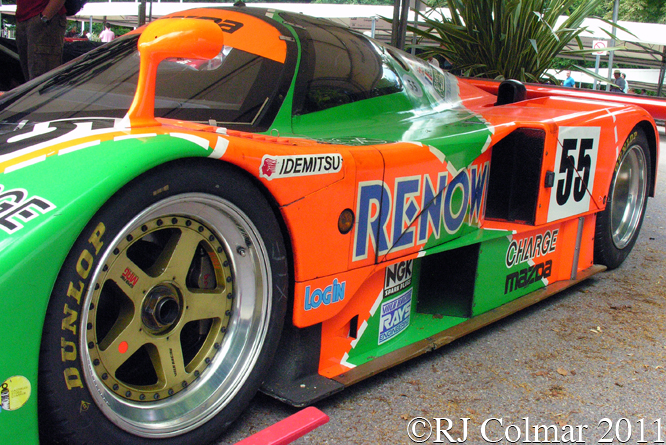
For 1991 the four rotor wankels were further upgraded with ECU controlled continuously variable telescopic intake runners which optimised engine power and torque at varying rpm.
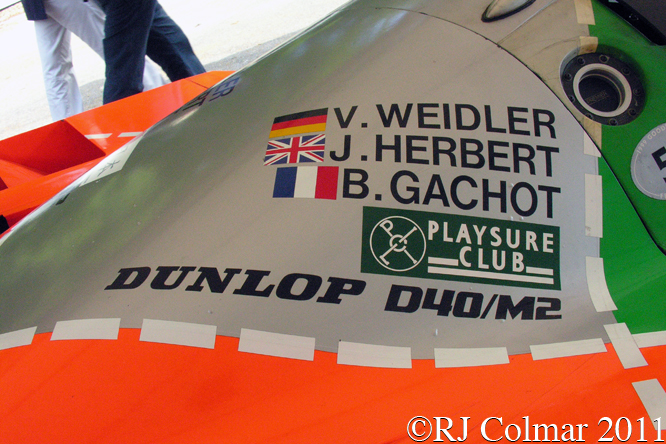
Three new 787B chassis were built for the 1991 season and the two existing 787’s were fitted with the continuously variable intake motors.
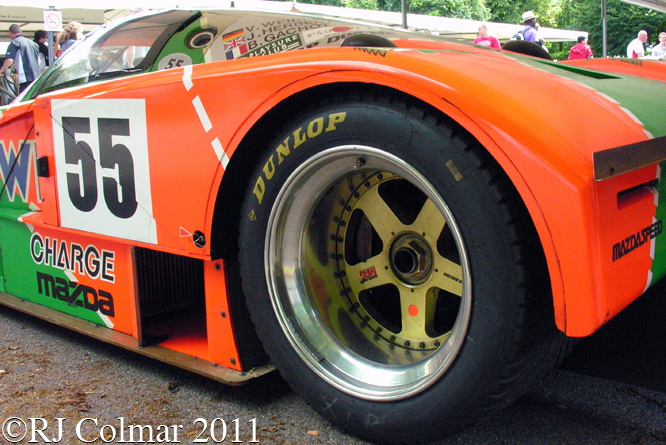
The 787B’s proved far more reliable than the 787 predecessor clocking up two 6th place finishes at Suzuka and Fuji before two 787B’s were sent to Le Mans.
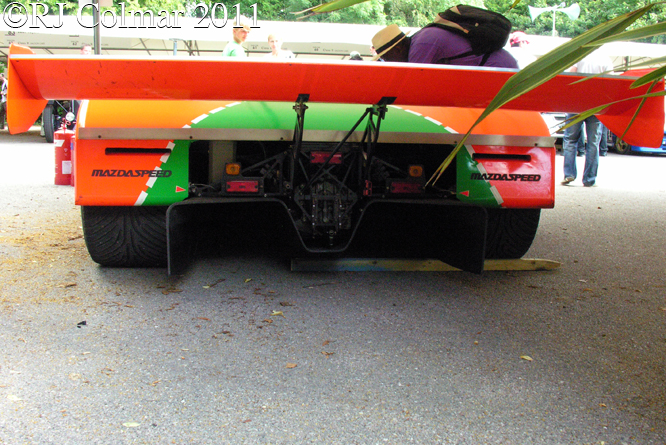
Unlike the old turbocharged Group C cars which had to run a 1000kg weight limit the IMSA GTP spec Mazda was allowed to run at 830 kgs.
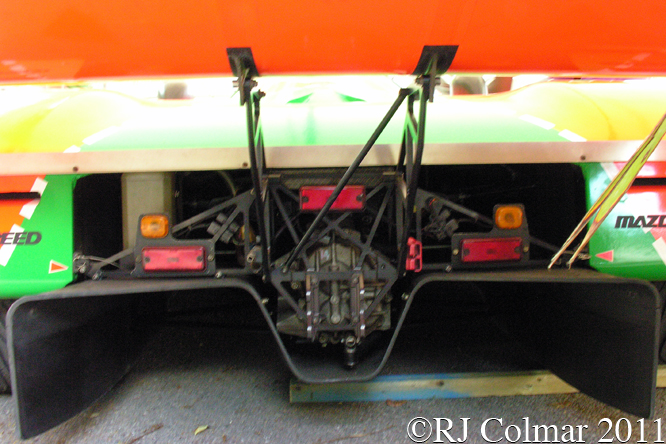
As a consequence the #55 787B chassis #002 featured today driven by Johnny Herbert, Volker Weidler and Bertrand Gachot which started only 19th on the grid, 12th fastest qualifier, came through to score the first Le Mans win for a car powered by a non reciprocating engine and the first and so far only Le Mans win for a Japanese manufacturer after all the faster, but heavier Group C turbo cars had wilted.
Thanks for joining me on this “ECU Controlled Telescopic Intake Runners” edition of “Gettin’ a li’l psycho on tyres” I hope you will join me again tomorrow when I’ll be looking at a French Le Mans challenger. Don’t forget to come back now !


